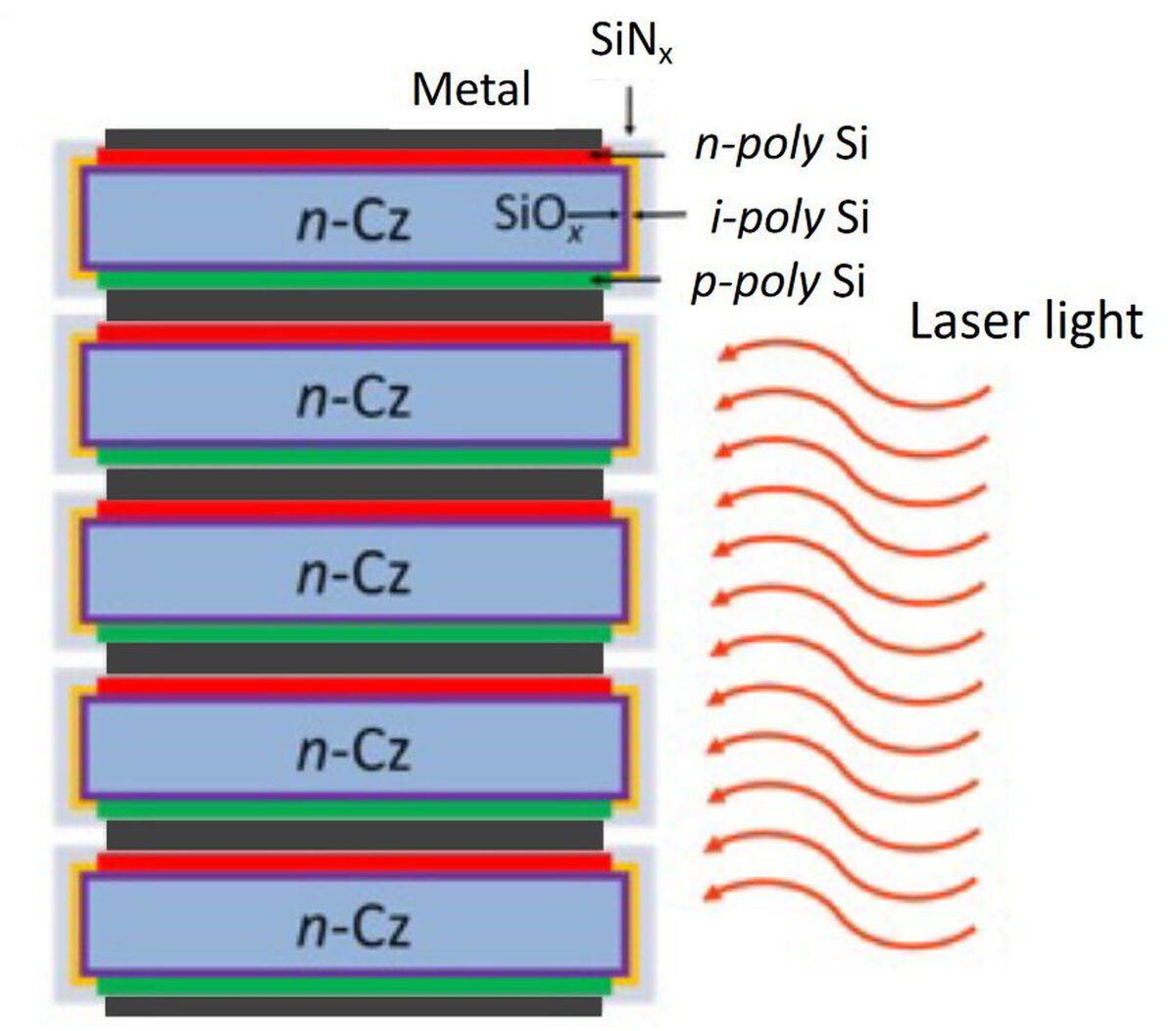From pv magazine global
A group of scientists led by the US Department of Energy’s National Renewable Energy Laboratory (NREL) has designed a monocrystalline mini solar panel that can convert laser light into electricity.
“This technology is inexpensive as it is silicon-based and uses the same processes used for terrestrial cells such as TOPCon devices relying on silicon oxide passivating contacts,” the research’s lead author, Paul Stradins, told pv magazine. “The module is composed of poly-Si/SiO2 passivated contact minicells. These minicells offer remarkably low contact resistance, suitable for high suns operation.”
In the paper “High-voltage monocrystalline Si photovoltaic minimodules based on poly-Si/SiOx passivating contacts for high-power laser power conversion,” published in Solar Energy Materials and Solar Cells, the scientists explained that the panel may be used, for example, in applications such as wireless data transmission in special environments or energy transmission in medical implants, among others.
The multijunction mini panel is designed with silicon oxide (poly-Si/SiOx) passivated contacts using a very thin SiOx layer of approximately 1.5 nm. These passivated contacts are used to build minicells that reportedly offer remarkably low contact resistance, suitable for high suns operation. The minicells are put “on edge” and packed into the modules.
“These minicells can be composed into micromodules by simply mechanical stacking,” said Stradins. “We used 10 cells, but it can be any number. Thus, the voltages of these micromodules can be high, while currents are kept low.”
In the solar module, the direct contact of the metal from one cell to the next allows for electricity to flow freely between them, with the large area of contact limiting series resistance. Light penetrates vertically through the narrow edge of the device and current is collected laterally through the large-area p- and n-type passivating contacts.
According to the researchers, this architecture allows the cell current to be collected over the whole “side” area of a minicell, which is considerably larger than the light entry area. “These 10- or more minicell stacks can be assembled into any size larger power beaming conversion module,” Stradins further explained. “There is no size limitation, can be meters if necessary, with cooling, tabbing, and power electronics on the backside.”
The research group tested the module at an illumination of around 1000 nm and found its photoconversion efficiency exceeded 40% and the open-circuit voltage surpassed 7 V. The fill factor was around 78%. “Based on current device results, it is expected that power transfer of 25 W could be obtained for a 10 cm2 module with a 12 kW laser source at a distance of 1 km,” the academics said.
According to Stradins, the minicells are made without any expensive lithography. “We use mechanically aligned masks for all deposition steps, which are easily made using ns laser scriber,” he said. “The minicells also are produced by the same laser scriber process. They remain attached to the wafer and processed as a whole wafer, for all steps including final metallization. Only then they are detached and assembled into a micromodule. All this can be automated in a production line.”
This content is protected by copyright and may not be reused. If you want to cooperate with us and would like to reuse some of our content, please contact: editors@pv-magazine.com.









By submitting this form you agree to pv magazine using your data for the purposes of publishing your comment.
Your personal data will only be disclosed or otherwise transmitted to third parties for the purposes of spam filtering or if this is necessary for technical maintenance of the website. Any other transfer to third parties will not take place unless this is justified on the basis of applicable data protection regulations or if pv magazine is legally obliged to do so.
You may revoke this consent at any time with effect for the future, in which case your personal data will be deleted immediately. Otherwise, your data will be deleted if pv magazine has processed your request or the purpose of data storage is fulfilled.
Further information on data privacy can be found in our Data Protection Policy.